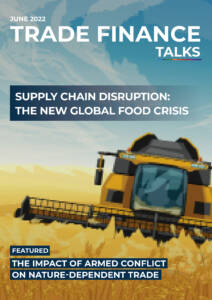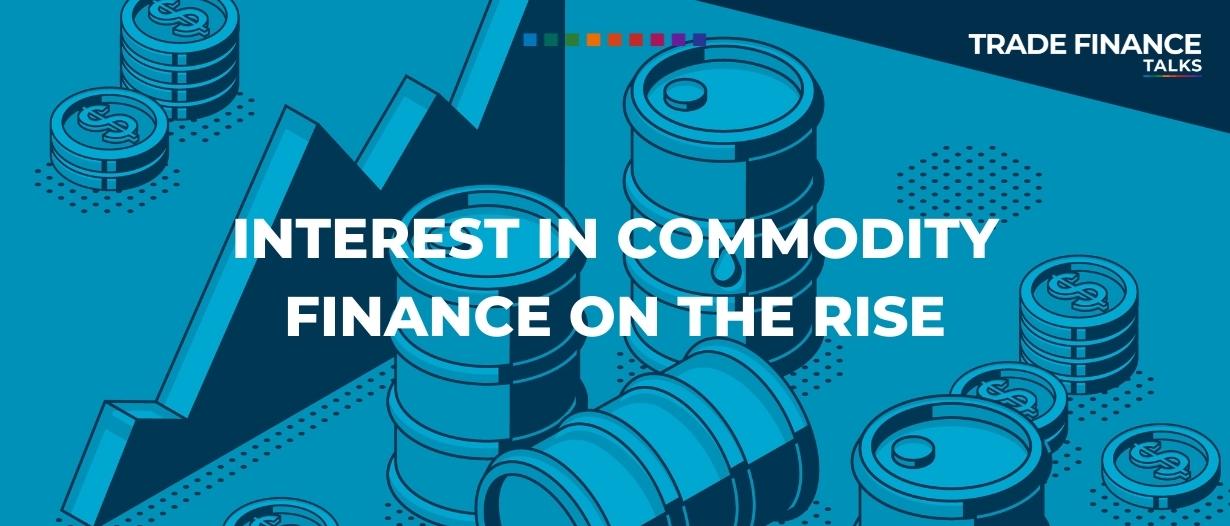Estimated reading time: 5 minutes
This article is co-authored by Marcus Lankford, Policy Analyst, Trade Finance Global and Mark Abrams, Head of Trade Finance, Trade Finance Global.
In December 2021, Bloomberg reported that several banks including BNP Paribas SA, Societe Generale SA, and ABN Amro have restricted financing commodity transactions following defaults linked to the pandemic and multiple frauds.
This can be argued to be a reduction in liquidity in the commodity trade finance space, however, promising economic trends suggest there is an opportunity for strong yields in this space.
Overarching trade trends support healthy demand for trade finance, in 2021, the United Nations Conference for Trade and Development (UNCTAD) reported that global trade was valued at $28.5 trillion, a 13% increase from pre-pandemic levels in 2019.
Additionally, Coalition Greenwich, a subsidiary of S&P Global, found that transaction banks involved in trade finance had a 10% revenue increase in 2021, a figure that is expected to rise in 2022 as commodity prices and interest rates increase.
This has led to renewed interest and revitalised revenue for commodity trade finance.
Already, Fitch Ratings indicates that large commodity traders are receiving more loans in 2022, according to S&P Global.
They found that following the commodity price increases, counterparty central clearing parties requested extra funds to meet margin requirements, which the banks are financing.
note: central counterparty clearing houses secure the terms of trade between the buyers and sellers, thus taking on the credit risk if the buyer or seller defaults and demand a margin to cover potential losses.
Taking advantage of these price increases means that trade finance looks like a strong source of revenue for financiers, but one major concern prevails – fraud.
Fraud risk frightens financers
When someone mentions fraud in commodity trade finance, the biggest names that come to mind are the Singapore based Agritrade International, an agricultural trader and Hin Leong, an oil trader who left banks open to a collective 5 billion USD in liabilities in 2020.
One of the most common occurrences of fraud is duplicate financing when a trader goes to multiple banks to gain access to finance using the same receivable.
If a trade fails, there could be competing claims from financiers over the ownership of a commodity.
This concern is inherent in a system where banks can’t communicate and check whether a receivable has been used for finance.
The regulations currently in place do help against fraud, but due diligence is the real key to its prevention.
This means financiers must:
- be familiar with the supply chain they’re funding, including the buyer’s and supplier’s business models;
- understand their customers and whether the transaction makes business sense; and
- check with shipowners on the validity of the bills of lading.
On-site visits combined with rigorous technology-powered checking and tracking of the goods while in transit will help.
The continued development of trade digitisation will help reduce fraud, for example using public interoperable networks that can help track if an invoice has already been financed will help reduce duplicate financing for example.
While some financiers are off-put by fraud risks, others baulk at the perceived cost of trade finance.

Entrenched limitations
Following the 2008 financial crisis, the financial regulations of Basel III and Basel IV, put stricter capital controls on lenders.
One way that lenders handle capital controls and reduce the burden of assessing multiple credit risks, and the administrative burden of know you customers (KYC) and anti-money laundering (AML) protocols is to finance fewer, but larger, more established traders in the market.
This has meant that, in an industry where it’s hard to securitise and sell your loan book, it’s more difficult for banks to extend large volumes of liquidity to willing traders.
Also, the trade values and shorter-term self-liquidating flows mean that there is a lack of scalable alternative liquidity providers in the market.
Since it involves shorter-term, revolving credit facilities, trade finance tends to be a less attractive area for credit funds that have underlying investors and return hurdles.
This can be contrasted to the mortgage market, where long-dated granular portfolios of mortgages can be packaged and sold.
Demand on the rise
The need for raw commodities has drastically increased, a trend compounded by supply chain issues and inflation.
Financing these commodity price increases means that traders need more capital to facilitate these transactions.
Incorporating the high value of trades, capital requirements, onboarding costs, and transaction risks means that lenders have deepened preferences for larger and more established traders.
This phenomenon has led to less liquidity for smaller traders in the market despite the trader’s profitability, with many finding it more difficult to finance these transactions.
Furthermore, fraud in the global commodities market tends to be highly publicised and drastically overstated in the media, despite being relatively few compared to other areas like mortgage markets.
Attractive returns, however, are enticing financiers back to commodity trade finance and the benefits of facilitating and investing in these types of transactions are widespread.
Transactional trade finance
Commodity trade finance offers a self-liquidating financing structure, and participants are investing in the real economy by supporting business transactions along the supply chain.
Where yields in equity markets are under threat and property prices are under pressure, trade finance offers a strong alternative with global trade generally unaffected by the fluctuations in equities markets.
The robust structure also adds comfort, as transactional trade finance transactions (financing specific trade flows) are self-liquidating, and lenders know the origin of purchase and repayment.
We welcome the growing interest in commodity trade finance, as participants seek attractive returns for scalable asset-backed trade. We hope this trend continues.
Read the latest issue of Trade Finance Talks, June 2022

























